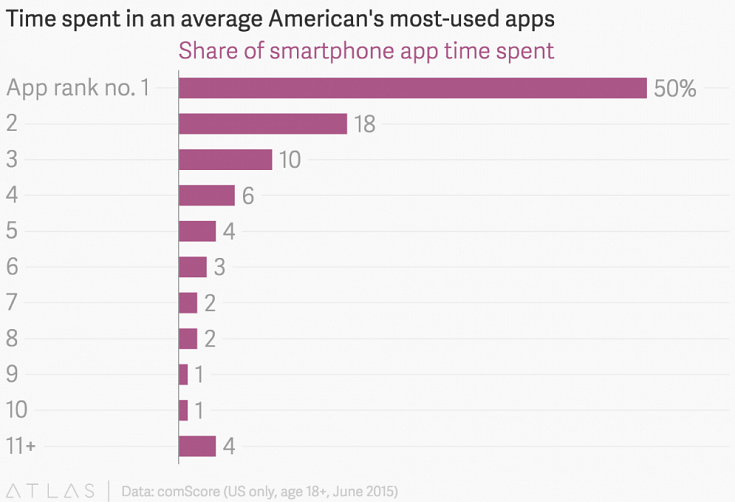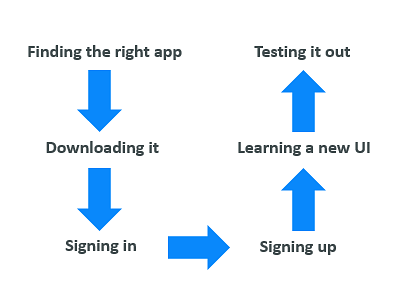The rise of conversational interfaces
6 April 2017 - Natalie Simpson

2016 was full of hype – and all the talk around conversational interfaces and chatbots replacing apps and websites was no exception. Four months into 2017 and ‘chatbots’ still seem to be a hot topic. But, what actually are they and how do we go about interacting with them? How do they function and which ones work well? Why is this important for us and what will the future look like?
For this three-part blog series, we will be delving into the world of chatbots further and taking a look at these questions. But first of all, where have conversational interfaces come from?
Background information
The tech world announced that last year was to be ‘the year of the bots(this will open in a new window) and conversational commerce(this will open in a new window)’. It seemed like every brand from CNN to Dominos to Pizza Express was jumping on the bandwagon and creating their own bot to bring us customised news feeds or let us book tables through Facebook Messenger.
The way in which we interact with technology is changing. We can now use our voices alone to ask Siri for directions, find out what the weather forecast is for the day or to even purchase a product by asking Alexa with our Amazon Echo. Times have certainly changed, and naturally, so has the user experience. But before we talk about that, how did these conversational interfaces start to become the new norm?
How did we get here?
The average smartphone owner has 27 apps on their phone. But whilst there is an endless number of these available, most users download almost no new apps per month(this will open in a new window). A study by comScore(this will open in a new window) shows that users actually spend the majority of their time in three apps only.

In addition to this, only 3% of all apps retain their users beyond 30 days(this will open in a new window). The effort required to download a new app and test it out to see if it could become one of our most frequently used just isn’t worth it anymore.
This is due to multiple friction points for users.

As a result, a handful of apps are used daily and occupy valuable data on our phones. Users would rather have services integrated into an app that they already use rather than download another one which takes up valuable storage space on their device. And thus begins the rise of messenger apps we already have starting to serve multiple purposes.
How the conversation started
In recent years, SMS and messaging apps have become a part of our daily lives. Huge numbers of us are using WhatsApp, Facebook Messenger or Slack to chat to family, friends or work colleagues.
Eight trillion(this will open in a new window): Is the number of text messages sent globally every day – that’s almost 16 million per minute!
One billion(this will open in a new window): Is the number of users active on Facebook Messenger.
One billion(this will open in a new window): Is the number of users logged on WhatsApp messaging platform – that’s a lot of messaging.
For the first time, people are spending more time in messenger apps than in social media – this is a huge turning point.
Over 2.5 billion people have at least one messaging app installed. Within a couple of years that will reach 3.6 billion, about half of humanity – The Economist(this will open in a new window)
The top four messaging apps (WeChat, WhatsApp, Messenger, Viber) have more monthly users than the top four networking apps (Facebook, Twitter, Instagram, Google+) and see longer periods of activity.
![Graph showing that from 2011 – 2015 messaging apps have surpassed social networking apps in terms of active users.]](/uploads/store/mediaupload/443/image/xl_limit-con-3.png)
It’s easy to see why messaging is so popular globally
It’s affordable: SMS and instant messaging are free or very cheap for most users.
It’s familiar, instantaneous and intuitive: Type, tap, send.
It’s quick: ‘I agree with your viewpoint and am looking forward to our meeting to discuss’ condenses to ‘k’ in text speak.
It’s forgiving: As lnog as the fsrit and lsat leettrs of ecah wrod are coerrct, the hamun biarn is remakrably adbatpale wehn it cemos to intterpreing ttxe.
Everyone is using it: WhatsApp users average almost 200 minutes of conversation every week(this will open in a new window).
For users, these days, it’s easier to continue a conversation than start a new one. And companies are starting to see the possibilities of aligning services through such conversations.
In our next blog article, we will look into chatbots further, what they are, how they work and why they have been predicted to take over from websites and apps.
You might also be interested in...
Bridging Business Analysis and User Experience: Achieve Outstanding Digital Results
24 November 2025Discover how aligning Business Analysis and User Experience transforms digital projects - boosting efficiency, user satisfaction, and ROI for organisations seeking exceptional results in today’s competitive market.
Read the article: Bridging Business Analysis and User Experience: Achieve Outstanding Digital ResultsMaking Hospitality Welcoming for All: A Digital Accessibility Guide for Hotels
21 November 2025Hotels have long focused on physical accessibility, but true inclusion extends online. This practical guide explains how to make your hotel website accessible for all guests—meeting global WCAG and EAA standards, expanding your reach, and creating a seamless booking experience for every visitor.
Read the article: Making Hospitality Welcoming for All: A Digital Accessibility Guide for Hotels3 perspectives on how AI is shaping inclusive digital experiences
10 November 2025AI is transforming digital accessibility — empowering disabled users, enhancing how we evaluate digital experiences, and reshaping how inclusive products are designed. This article explores three key perspectives and highlights how AI can support more equitable, human-centred digital experiences when used thoughtfully and collaboratively.
Read the article: 3 perspectives on how AI is shaping inclusive digital experiences